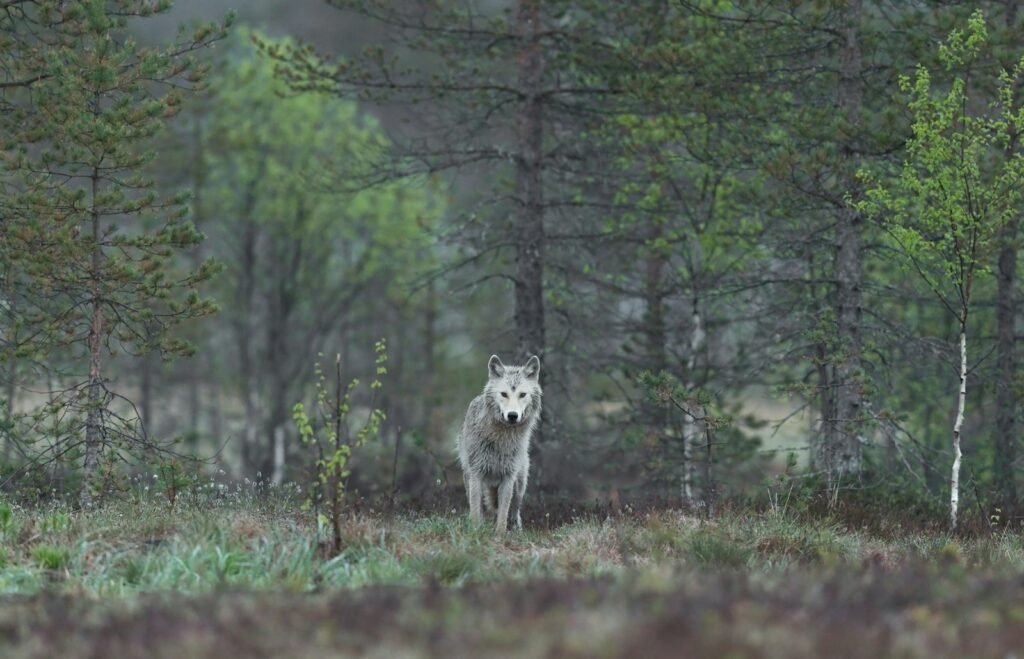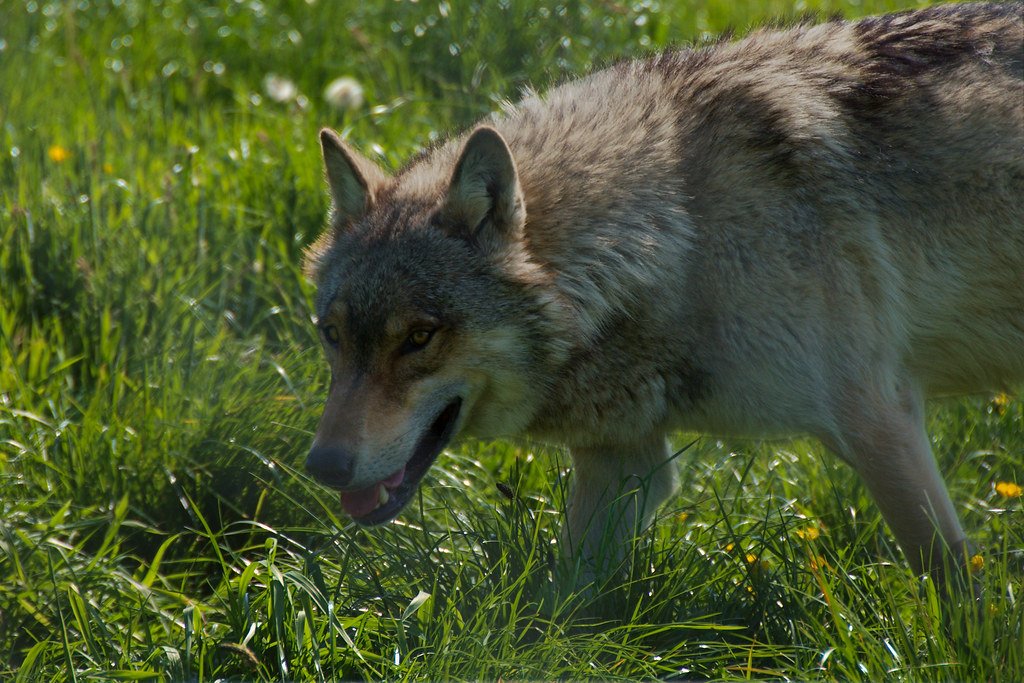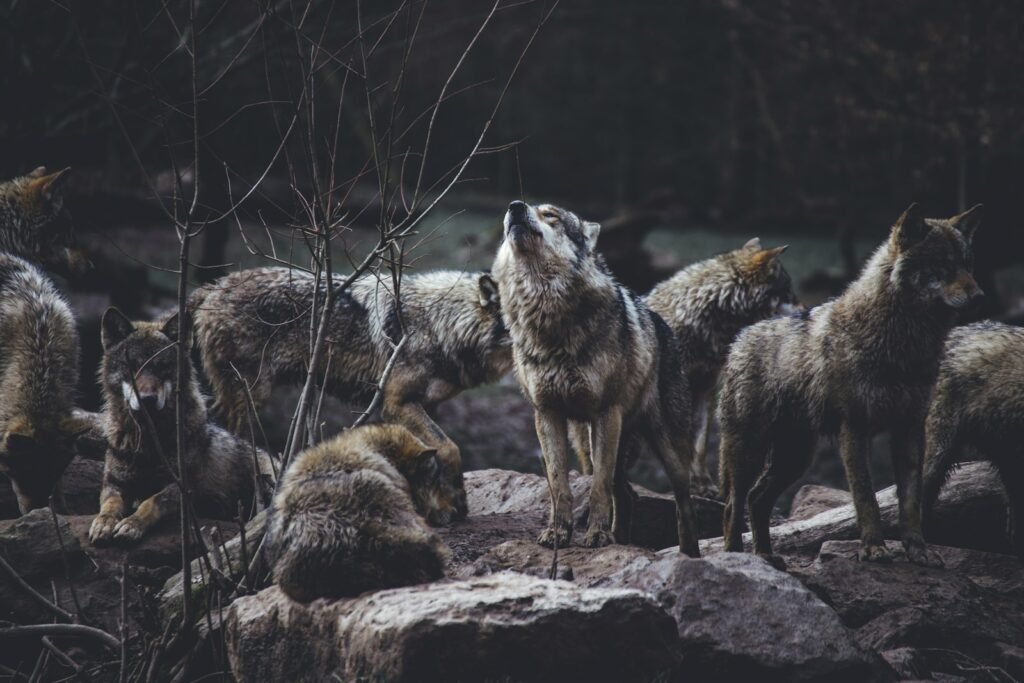The sound of a lone wolf’s howl cutting through the stillness of a winter night sends shivers down some spines and stirs something primal in others. After decades of absence from vast swaths of their former territory, wolves are making their presence known again across America and Europe. But their return isn’t being met with universal celebration – far from it. The debate surrounding wolf reintroduction has become one of the most polarizing conservation issues of our time, splitting communities, pitting urban voters against rural residents, and forcing us to confront fundamental questions about our relationship with nature.
The Unlikely Comeback: How Wolves Returned from the Brink

Think about this for a moment: by the 1960s, humans had almost completely wiped out wolves from the continental United States and most of Europe. In 1974, Congress listed the gray wolf as endangered under the ESA. However, it wasn’t until two decades later that wolves were finally restored to their former habitat in the American West. What followed was one of conservation’s most dramatic turnaround stories. In 1995 and again in 1996, gray wolves were captured in Canada and relocated to Yellowstone National Park and central Idaho. It’s like nature’s own version of a witness protection program – taking animals from one place and giving them a completely fresh start somewhere else. Thanks to increased conservation efforts, wolves are making a comeback in Europe. Thanks to increased conservation efforts, wolf numbers are recovering—there are now around 12,000 individuals across the European continent. The numbers tell a story of remarkable resilience, with about 5,500 wolves in the United States and 11,000 in Europe as of 2019.
Colorado’s Wolf Wars: When Democracy Meets Wildlife

State voters required reintroduction with a November 3, 2020 ballot initiative. The agency must have a plan in place by December 31, 2023. Colorado’s wolf story perfectly captures the messiness of modern conservation politics. Voters in the state narrowly approved bringing wolves back, but that victory came with a price. In late December 2023, the first wolves were released onto public land in Summit and Grand counties. The 10 wolves were translocated from Oregon. The group consisted of two adult male, two juvenile males, and six juvenile females. But here’s where things get interesting – and controversial. The core question Colorado Parks and Wildlife commissioners faced last week was whether to grant ranchers’ petition to delay the release of the next round of wolves until the agency better solidifies conflict-minimization programs. Ranchers have repeatedly said programs to reduce conflict between wolves and livestock were not fully developed or fully staffed before the state released wolves in December 2023. It’s like trying to build a bridge while cars are already driving on it. Wolf reintroduction could return to the Colorado ballot next year. The Colorado Secretary of State’s Title Board on Wednesday approved language for a proposed ballot measure that would ask voters in 2026 to end the reintroduction of gray wolves by the end of that year.
The Rural-Urban Divide: When Cities Decide the Countryside’s Fate

Here’s something that really gets under people’s skin: a moral argument against wolf reintroduction is that it is imposing the will of the majority of Coloradans on rural Coloradans who have to live with the potential negative impacts of wolves. Picture this scenario – you live in downtown Denver, you think wolves are majestic creatures that belong in the wild, and you vote to bring them back. Meanwhile, someone running cattle in the mountains has to wake up to find their livestock attacked. The animal has become symbolic of the rural-urban divide where rural communities do not feel their concerns are recognized by urban populations that value conservation. It is less a conservation/human-wildlife conflict issue and more a social/political one. This isn’t just about wolves anymore – it’s about who gets to make decisions about rural life. But what I think people are really arguing about is more than that: who has power and who doesn’t. It’s about what public land is for and how people think humans should relate to the rest of nature — and who gets to decide. When you frame it like that, suddenly the howling debate makes a lot more sense.
Montana and Idaho: Where Wolf Hunting Becomes Political Theater

If you want to see where the wolf debate gets really ugly, look no further than Montana and Idaho. On July 1, 2021 Idaho implemented legislation designed to reduce its wolf population by 90 percent. It established bounties as high as $2,000, authorized financial compensation for wolf hunters and trappers and legalized wolf killing at any time and by virtually any means. Idaho has earmarked just over $1 million for wolf killing. That’s not wildlife management – that’s a vendetta with a budget. Montana passed similar legislation that seeks to eradicate 90 percent of its wolves. It also implemented a de facto bounty system by compensating trappers and hunters for wolf-killing expenses. And it did away with the wolf-protection buffer around Yellowstone National Park. Think about the irony here: tourists flock to Yellowstone hoping to catch a glimpse of wolves, while just outside the park boundary, those same animals can be killed without limits. A person can take up to 20 wolves with no more than 10 via hunting and no more than 10 via trapping (maximum harvest of 20 wolves per person). The bag limit per person is 20 wolves, with up to 10 by hunting and up to 10 by trapping.
Wisconsin’s Bloody February: When Politics Overrides Science

Wisconsin’s wolf hunt of February 2021 reads like a case study in how not to manage wildlife. Wolf hunters told other hunters not to register animals right away so that the hunt would stay open. In the end, the wolf hunters not only took their allotted quota but took the tribe’s quota. The whole thing was a mess that lasted just three days. During three days in February 2021, 218 wolves were slaughtered. In February, opening a wolf hunt disrupted the gray wolf’s breeding season, potentially killing pregnant females and using dogs to hunt wolves. More than anything, this forced wolf hunt proved no one was listening to the scientific community. It’s like organizing a book burning in a library – technically legal, but fundamentally wrong. And now with the Trump Administration and republican control of both the senate and the house there is no doubt that Wisconsin’s Gray wolf will be delisted in 2025. The political pendulum swings, and wolves pay the price.
Europe’s Mixed Signals: From Protection to Predator

Europe’s relationship with returning wolves is just as complicated as America’s, but with a different flavor of controversy. In 2015, a wolf was spotted for the first time in the Netherlands after a 150-year absence—it was a male from Germany looking for a new territory. The wolf population has since rapidly expanded and news about the wolf in the Netherlands is a hot and divisive topic. Research by the country’s Ministry of Agriculture, Nature, and Food Quality shows that 54% of the Dutch think that the wolf deserves a place in the Netherlands and 76% do not see the wolf as a threat to humans. But others are concerned with the growing wolf population. It’s fascinating how different countries handle the same species differently. The Swiss government has announced a renewed plan for wolf hunting despite a decrease in livestock attacks. Starting September 1, 2024, cantons will have the authority to conduct preventive wolf culling. Even when wolves aren’t causing problems, some places still want them gone. As of 2021 the wolf hunt has been banned in all of Spain.
The Rancher’s Nightmare: Livestock Losses and Economic Reality

Let’s be honest about something that wolf advocates sometimes downplay: wolves do kill livestock, and that costs real money to real people. In 2015, wolves were responsible for 158 cattle deaths, 218 sheep deaths, 5 dog deaths, and 3 dead horses across 5 states included in the study where wild wolves roam. In attempt to compensate the farmers that were facing losses, the government handed out more than $500,000. When your livelihood depends on keeping animals alive and healthy, finding them torn apart by predators isn’t just an economic loss – it’s devastating on a personal level. Wolves that move through the country in search of a new territory are known to prey on livestock such as sheep, and sheep owners worry for the well-being of their animals and the high costs involved in implementing protective measures. “This is what it feels like to the ranchers — that it’s a runaway train and it’s picking up speed, and the engineer knows full well that there is a bridge out ahead.” It’s worth noting that studies have shown that even when livestock is abundant in wolf territory, wolves still mostly prefer to feed on wild animals such as deer and wild boar. Boosting the availability of natural prey is therefore critical to improving human-wolf relations.
The Science Behind the Fury: Trophic Cascades and Ecosystem Health

Here’s where things get really fascinating from a scientific perspective. In an article published by the Colorado Springs Gazette, Liz Forster writes about how wolf reintroduction into Yellowstone National Park was considered a success by some scientists as an example of something called “trophic cascade.” By definition, this is “an ecological phenomenon triggered by the addition or removal of top predators and involving reciprocal changes in the relative populations of predator and prey through a food chain.” Think of it like a game of ecological dominoes. The wolves killed some of the elk, which allowed formerly stunted willows, aspens, and cottonwoods to replenish along river beds and attracted hordes of songbirds and beavers. Soon, grizzly bears, mountain lions, and other wildlife were seen perusing the valleys, and stream health markedly improved. The presence (or absence) of apex predators in ecosystems can also have a huge impact on climate – researchers estimate that the presence of wolves in all boreal forests in the United States would increase carbon storage by up to 99 million tonnes. But here’s the thing – not everyone buys into the trophic cascade theory, and that’s part of what makes this debate so contentious.
The Unexpected Economic Argument: Fewer Car Crashes, More Tourism

Here’s something that might surprise you: wolves might actually save money and lives by reducing car accidents. We show that, for the average county, wolf entry reduced DVCs by 24%, yielding an economic benefit that is 63 times greater than the costs of verified wolf predation on livestock. Most of the reduction is due to a behavioral response of deer to wolves rather than through a deer population decline from wolf predation. It’s like having an invisible traffic safety system that works 24/7. Studies have shown that the presence of wolves can have economic benefits, such as increased tourism revenue from wolf viewing and increased ecological services such as carbon sequestration. In addition, the restoration of wolves can help to promote a sense of connection to nature among local communities. The beneficial reduction in DVCs concentrates in rural areas where livestock predation also occurs. So the same areas that bear the costs of wolf predation also get the benefits of reduced car crashes – talk about a complex equation.
The Dark Side of Good Intentions: When Reintroduction Goes Wrong

Even some wolf biologists have serious concerns about how reintroduction actually works. Wolf reintroduction is a huge and messy paradox, a noble intention to save the wolf soaked in the wolf’s own blood. Boyd used traps with smooth steel jaws that clamp around a wolf’s leg when they step on a spring-loaded disc buried in a spot where a wolf might step. Shock and stress rifle through wolves’ bodies when the jaws snap on their leg. “It’s painful and terrifying for them,” Boyd said. This is the uncomfortable reality that gets glossed over in feel-good conservation stories. “I am absolutely certain wolves would be here in the numbers they are now just through natural dispersal. But natural recolonization was effectively killed by reintroducing the wolves.” It’s a sobering thought: maybe the cure was worse than the disease. That led to angry protests and dead wolves. “Humans don’t like to have stuff foisted on them,” Boyd said.
The Cultural Memory: Why Some Families Still See Wolves as Enemies

There’s something deeper going on here that goes beyond livestock losses or ecological benefits. Most of the ranching families have their predecessors who actively hunted wolves and are respected for it. The reintroduction programs dump the wolves from far away back into the land because of some faraway people. This in their view means disrespecting their predecessors who fought against the wolves. Imagine if your great-grandfather was a local hero for protecting the community from something dangerous, and now outsiders are telling you that thing should be welcomed back. Wolves are not coming back to the wild in Britain in the foreseeable future, because society is not ready. Wolves suffer from a long history of demonisation and myth-making. These cultural memories run deep, passed down through generations like family recipes. It’s not just about the present – it’s about honoring the past while trying to navigate the future.
Europe’s Natural Comeback: When Wolves Return on Their Own

Here’s an interesting twist: unlike in America, most European wolves aren’t being reintroduced – they’re coming back naturally. In Europe, wolves have never been reintroduced to an area. The expansion of the wolf in Italy and in the Alps, as well as in other European regions, in the last forty years is the result only and exclusively of the natural dynamics of the species. When they disperse, they can make several hundred kilometres within a few months. It’s like nature’s own GPS system, with young wolves striking out on epic journeys to find new territory and mates. Thanks to the phenomenon of dispersal, starting from the few dozen wolves which survived in Italy in some areas of the central-southern Apennines in the 1970s, generation after generation, the species has regained the territories from which it had been eradicated. This gradual, natural process might be less politically charged than deliberately trucking wolves in from elsewhere, but it still creates the same conflicts.
The Moral Battleground: Rights, Ethics, and Competing Values

Moral arguments—arguments that something is “right” or “wrong”—are invoked on both sides of the debate about wolves. Moral arguments touch on some of our most deeply held values. On one side, you have people who believe wolves deserve to live where they once thrived, humans should share the land with and respect members of the biotic community such as wolves, and wolves enhance the wilderness character of natural areas. On the other side, media coverage of wolf reintroduction in Colorado often includes the moral argument that the ballot initiative for wolf reintroduction wrongly imposes the will of the urban majority on the rural minority in the state. Native Americans have always been active stewards of the land, but some believe that we should not directly interfere with nature. These people might say we should support the land’s healing and natural processes, but we don’t have the right to decide when or how the land heals. It’s like a philosophical debate played out with real consequences for both wolves and people.
The Success Stories: Where Coexistence Actually Works

Despite all the controversy, there are places where humans and wolves have figured out how to live together. In Romania, there isn’t much human-wolf conflict thanks to dedicated conflict management measures to prevent damage by wolves. Many flocks of sheep are well protected with electric wire fences or by the Carpathian sheepdog, an effective age-old tradition.




